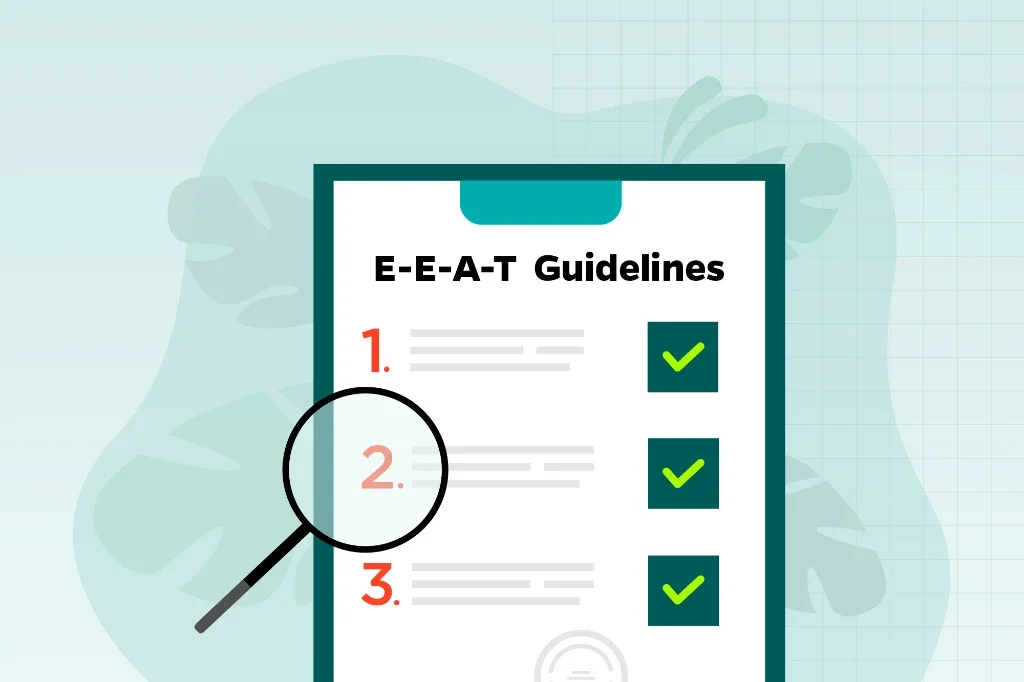E-E-A-T stands for Experience, Expertise, Authoritativeness, and Trustworthiness. E-E-A-T was originally introduced as EAT. Experience was added in December 2022 to reflect Google’s emphasis on content creators’ firsthand knowledge.
While not a direct ranking factor, E-E-A-T is a guiding framework for Google to interpret quality signals such as backlinks, content authenticity, and user engagement. Google created this framework to satisfy user intent and to ensure that they were providing high-quality answers. Each component plays a critical role:
- “Experience” highlights real-world insights and original content.
- “Expertise” emphasizes relevant qualifications.
- “Authoritativeness” is backed by strong reputations and reputable backlinks.
- “Trustworthiness” relies on clear authorship, secure design, and transparency.
“Google’s main goal is to satisfy searcher intent, and expertise is—or rather trustworthiness is—a shorthand for making sure that they’re providing high quality answers. So, really, E-E-A-T is Google’s way of making sure that they’re most efficiently satisfying searcher intent.”
Important to Note: Some pages require stronger E-E-A-T. These pages have YMYL “Your Money or Your Life” content. This type of content applies to industries like finance, health care, law, and cybersecurity (and this list is far from exhaustive). In each of these areas, there is a higher burden of accuracy and credibility due to real-world consequences. Bad information could be problematic and cause liability concerns. You need a higher degree of expertise to rank well in those fields.
When these types of pages lack strong E-E-A-T, they are more heavily penalized and are excluded from top results entirely. Google expects the content to have clear evidence of expertise and reliable sourcing linked to highly authoritative sources with strong reputations to protect users from misinformation.
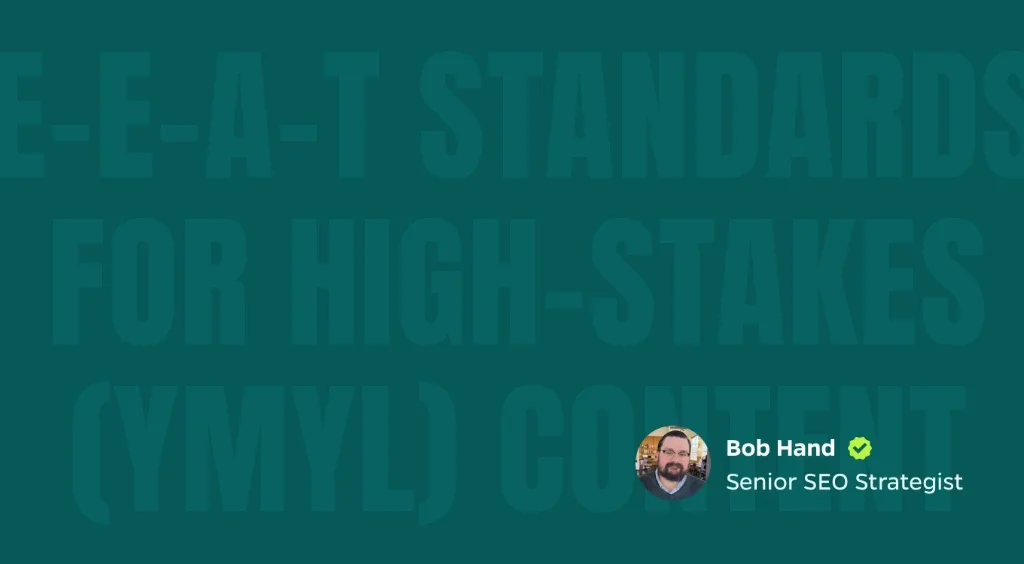
E-E-A-T Standards for High-Stakes (YMYL) Content
I think because errors or misleading information in these areas can cause real harm to users, Google wants to ensure that such content comes from trusted, authoritative, and expert sources to protect users from misinformation.
What are E-E-A-T’s key elements and how do they influence SEO?
- Experience
- Experience is proven through firsthand insight, genuine familiarity, real-world involvement, and appropriate credentials.
- It is demonstrated through personal stories, detailed process descriptions, original images, authentic reviews, and case studies.
- Google favors content that is authentic and original over content that is templated, generic, or heavily AI-generated.
“Human evaluators look for signals like unique details, specificity, author credentials. All of those can play a role in in how the E-E-A-T of a page functions in the SERPs.”
- Expertise
- Expertise involves formal education, industry certifications, professional experience, and a demonstrated deep practical knowledge of the subject matter.
- The expertise presented must be directly relevant to the topic at hand.
- It can be shown through author bios, content bylines, and consistent publication of topic-specific content.
- Authoritativeness
- Authoritativeness is determined by the individual’s or brand’s reputation, external validation, and the presence of high-quality backlinks.
- Backlinks from government (.gov) and educational (.edu) websites are considered especially strong indicators of authority.
- Regular content publication and a consistent, recognizable brand voice also help establish and maintain authority.
- Trustworthiness
- Trustworthiness is foundational to the E-E-A-T framework; without it, even strong expertise and authority may have diminished impact.
- It is built through elements like clear authorship, secure HTTPS protocols, accessible privacy policies, and a user-friendly website design.
- Creating well-sourced content helps reduce misinformation. Google evaluates clarity, design, and navigation as indicators of trust and user safety.
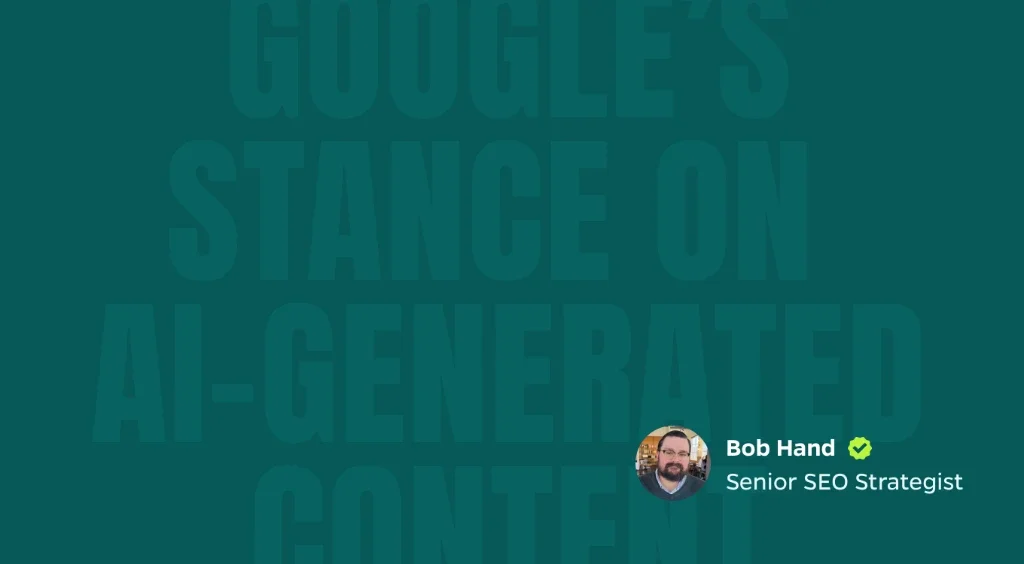
Google’s Stance on AI-Generated Content
So Google’s perspective on AI generated content is that it’s okay with it as long as there is some level of, human involvement in, you know, the editorial process. It’s okay if it’s AI generated as long as it’s backed and evaluated by someone with that those that expertise. That’s why if you look at a website like WebMD or something, even if the content isn’t, you know, super comprehensive, it’ll still sometimes rank well when they have that evaluated by line. It’s not even like an author. It’s just this doctor with an MD and you can click on their LinkedIn, evaluated this content. And therefore, we’re going to treat this with increased trustworthiness because it has that connection. AI generated content can perform well. It just needs especially in YMYL, it needs to have, human eyes on it to make sure that it’s not giving you misinformation.
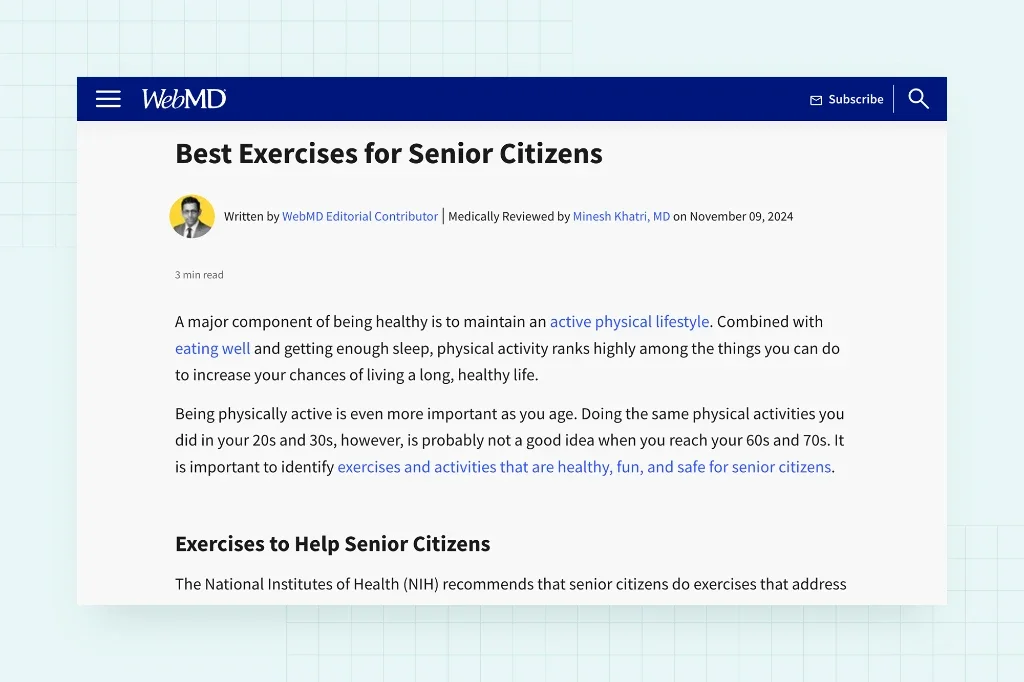
What are actionable strategies to build trust and authority for better SEO?
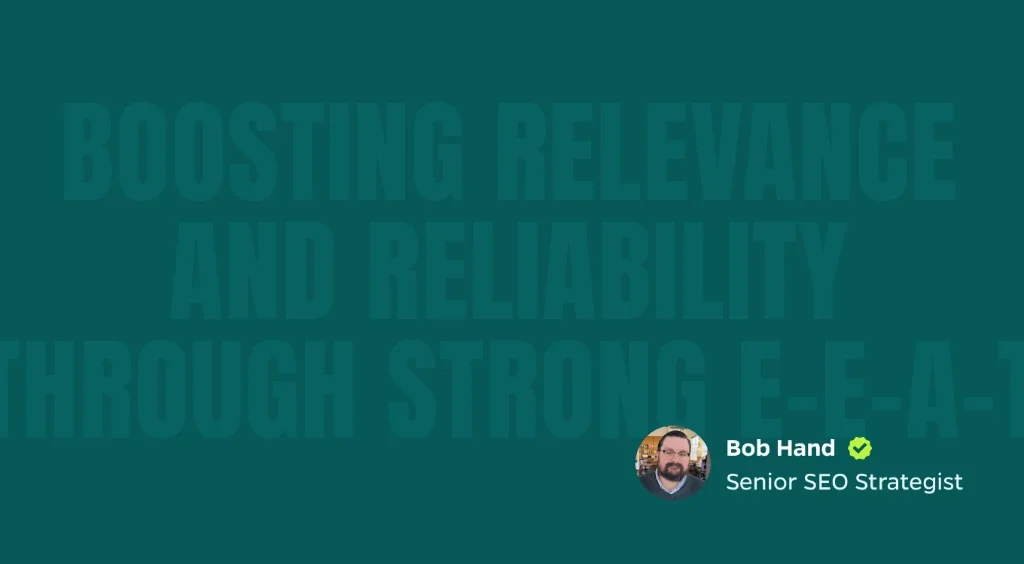
Boosting Relevance and Reliability Through Strong E-E-A-T
Strong E-E-A-T improves how Google assesses content relevance and reliability. So more the more signs that we can put on pages for clients that indicate that the author of the content is trustworthy, that they have experience in the industry, anything we can do like that that points to signs of expertise only uses with Google’s attempts to continue doing essentially what they have been doing.
On-Site Signals
It’s all about the details. Google needs to see detailed author bios with credentials and an internal link to an author page, which includes a summary of their expertise, experience, and educational details. You could also include a link their professional pages on LinkedIn or Twitter. Follow editorial standards and maintain updated content.
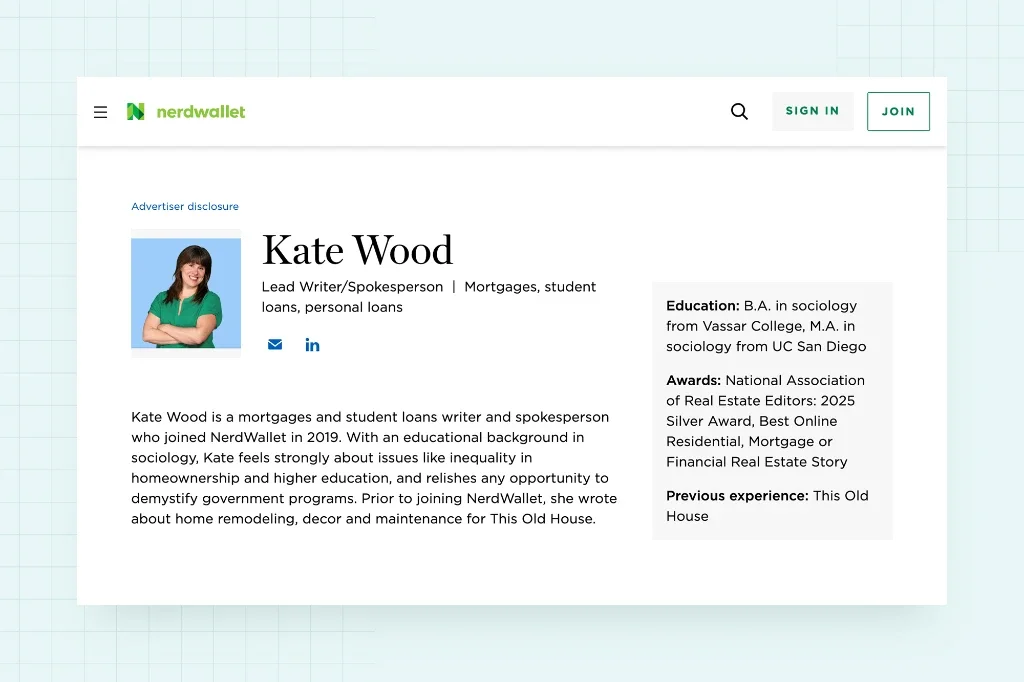
Off-Site Signals
High-quality backlinks from industry-relevant sources indicate trust, recognition, and an external validation that boosts authority. They show that you are respected within the industry and that you should be taken more seriously.
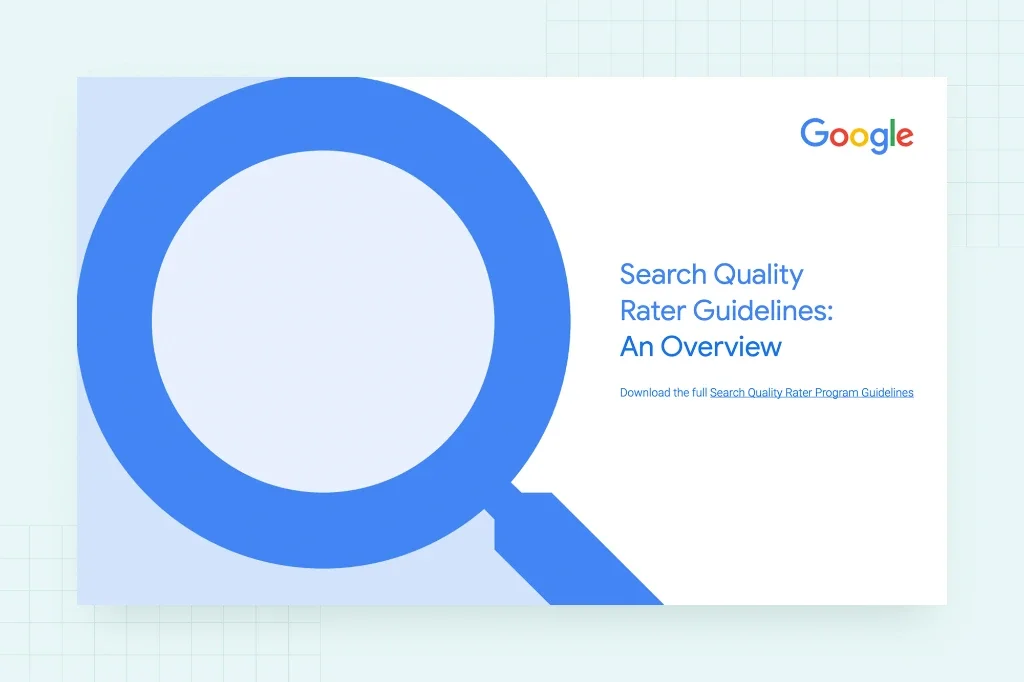
A good example of this strategy in action is our work with BillingPlatform. SEO expert Bob Hand focused on earning backlinks from credible sources to strengthen topical authority and visibility. This was one of several strategies implemented as part of a broader effort to improve organic performance. The end result—267% increase in leads quarter over quarter.
To achieve similar goals, consider creating external content such as guest posts and infographics that can help you secure links on reputable sites. Also, look to do expert interviews, partner with trusted organizations, get positive media coverage, or find any organic coverage to help strengthen your authority and image.
More importantly, your business will want to clean up your business profile for any directories. Be sure to actively manage any reviews. You’ll also want to build trust signals across platforms with need consistent branding. Be transparent with engagement on social media and check for reliable messaging everywhere your brand appears.
Can you use AI content and still meet E-E-A-T standards?
AI content can meet E-E-A-T standards with careful review. Human oversight is necessary for accuracy, credibility, and originality. Simply copying text from learning language models (LLMs) and publishing as your own—particularly after it’s already been published elsewhere—is not going to help your ranking. Develop your own footprint in a niche and have trustworthy content. From there, you’ll start to build authoritativeness around it. That will boost your performance.
“It’s really E-E-A-T plus good content equals good rankings. You need both of those pieces of the equation.”
Please note: Make sure someone on staff is using an editorial style guide and doing a rigorous content review before publishing. It’s necessary for developing the E-E-A-T, and it also protects against liability issues. With any AI content, there’s a risk of hallucinations meaning you could be getting false information. You also risk generic tone and loss of brand voice.
Editorial Best Practices for AI
- Implement human-in-the-loop processes. Expert reviews with style and fact-checking processes.
- Use consistent brand style guides. A source your employee can double check that they are speaking with a coherent voice across content, so users know it’s you and your brand.
- Conduct periodic content audits to update outdated content and broken links. Double check for plagiarism, validate claims, correct errors and ensure context and nuances that AI often misses.
- Do not make AI the sole content creator. Google end users expect human judgment and oversight to ensure trustworthiness—especially in sensitive, your money or your life topics. That level of editorial review is not only expected, but for ranking well, it’s required.
What is (and isn’t) E-E-A-T in Google’s algorithm?
First, here are some common misconceptions about E-E-A-T:
- E-E-A-T is not a score or metric. Google doesn’t assign a number.
- E-E-A-T cannot be “optimized” like page speed. It requires best practices.
- Plug-ins may help flag issues but can’t evaluate E-E-A-T meaningfully.
- There’s no quantitative measure for it. It relies on complex contextual evaluations, and it’s all based on the industry.
E-E-A-T represents multiple overlapping factors that Google considers holistically. It’s not a single ranking metric; rather, it serves as guide to assess content quality. Google uses algorithms to assess signals associated with E-E-A-T, like backlinks and other engagement metrics to rank trustworthiness. Authoritative content ranks better, because Google is looking for those signals. It’s not a ranking factor though.
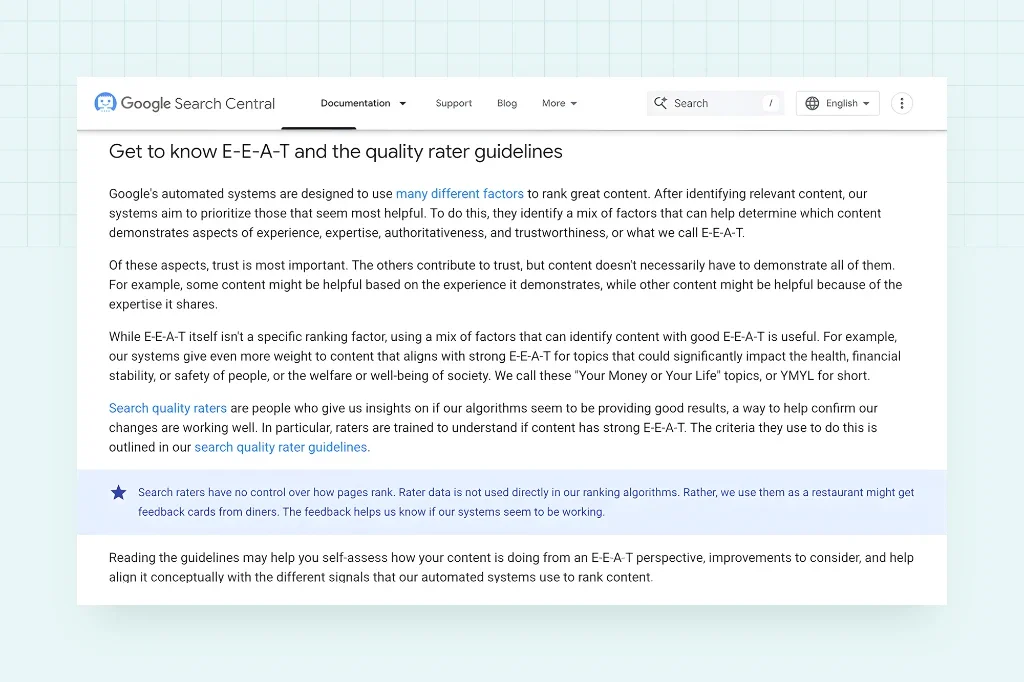
On the backend, human evaluators use the E-E-A-T guidelines to read search results. Those ratings don’t directly affect rankings, but they help train and calibrate algorithms by assessing whether high-ranking results meet quality standards. By following best practices, you’ll see a positive result. Future-proofing SEO with E-E-A-T equates to long-term strategies for content credibility.
E-E-A-T Content Strategy for SEO
E-E-A-T provides real user value by helping sites build lasting visibility, resilience to algorithm updates, and long-term trust with audiences. To keep your site updated, you need to do the following:
- Publish new content regularly.
- Maintain author expertise.
- Provide transparent sourcing via backlinks or similar.
- Have active user engagement.
- Respond to feedback, whether that be comments on your site or through Google reviews.
Your workflows should include rigid editorial review processes, subject matter expert collaborations, continuous user research, and structured audits to make your site easier to scan. These all play a role in prioritizing user-first, high-trust content.
Long-Term E-E-A-T Optimization
Conduct annual content audits, or more frequently for fast-changing industries. Review for accuracy, relevance, broken links, outdated author bios — especially in fields where changes happen rapidly. Refresh your sources and links on your site and reevaluate credentials to be sure you add extra credentials and information as needed. Look also for consistency with brand voice and in your style book.
Google’s expectations evolve over time, so staying informed allows you to stay calibrated to what they’re expecting from their high-ranking pages and avoid penalties or ranking props.
E-E-A-T Builds Brand Reputation
Strong E-E-A-T builds a reputation for quality and reliability. Investing in E-E-A-T means investing in a strong brand presence. It’s just making sure that your voice is consistent, backed by trustworthy sources. And with that, you’ll see continued trust, brand authority, and user engagement. These things lead to organic growth over time.
Action steps: How can you future-proof SEO with E-E-A-T?
Important things to remember: E-E-A-T is especially crucial for “Your Money or Your Life” (YMYL) content in sensitive fields like finance and health, where credibility is paramount. While E-E-A-T isn’t a measurable score, it remains central to Google’s commitment to surfacing reliable, user-first content.
AI-generated content can align with E-E-A-T standards if it’s supported by expert oversight, fact-checking, and consistent editorial standards. Strengthening E-E-A-T, both on-site signals (e.g., author bios, updated content) and off-site signals (e.g., partnerships, quality backlinks) are essential.
Sustainable success comes from treating E-E-A-T as an ongoing process through audits, expert collaboration, and workflows that reflect brand values. Done right, it provides SEO stability and user trust even as algorithms evolve.
Benefits
- Achieve greater ranking stability during algorithm updates.
- Build stronger user trust and engagement.
- Realize more organic backlinks due to reputable content.
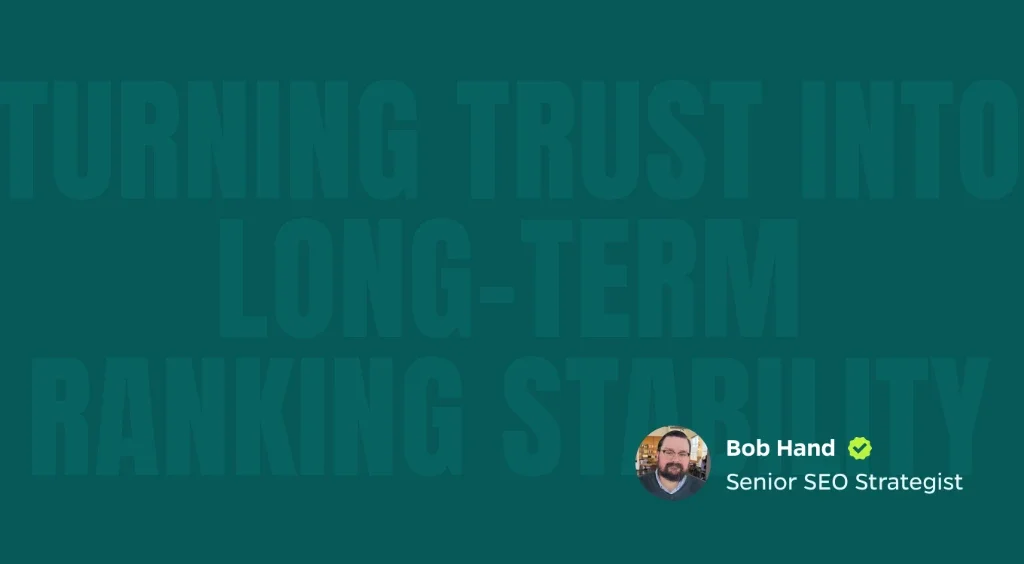
Turning Trust Into Long-Term Ranking Stability
Greater ranking stability. I kind of pointed to the resilience, against Google algorithm updates. So sites that invest more in E-E-A-T should see less volatility during algorithm updates. Not saying there won’t be any, but at least it won’t rock the boat as much, as well as a higher you in user engagement and conversions. And, also having a more consistent, voice, well-sourced content leads to natural backlink acquisition. That’s worth noting, which just kind of steamrolls, snowballs into a, hey, you’re trustworthy so people are citing you, and now Google views you as more trustworthy so people will continue citing you. And that’s really the dream right there. That’s the pipe dream.
Alignment with Google’s Mission
- Google prioritizes useful, reliable, trustworthy content to meet user expectations.
Business Advice
- Invest in accurate, original, well-optimized, high-value content.
- Strengthen your off-site authority through partnerships, link building, and reputable citations.
- Maintain editorial consistency and brand integrity to ensure a consistent authoritative voice.
“I’ve begun to view SEO as kind of a Triforce of on-site optimizations, off-site optimizations, and E-E-A-T. Especially for the last couple years, it’s been equally, if not more important than either of those other two pieces. Google wants good information from good sites that are investing [in good E-E-A-T practices and content] and doing the right thing.”


